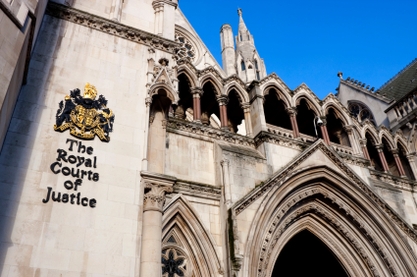 For many lawyers the word ‘review’ is closely connected with the work of courts, which may be what springs to mind when the term is used. Rather than focus on judicial review mechanisms, our project takes a much wider approach to counter-terrorism review, looking across a very wide range of actors and reviews in order to try to map and to understand the nature of counter-terrorism review in the UK. However, this does not mean that courts and, indeed, other tribunals acting in a court-like fashion, are not important to counter-terrorism review.
For many lawyers the word ‘review’ is closely connected with the work of courts, which may be what springs to mind when the term is used. Rather than focus on judicial review mechanisms, our project takes a much wider approach to counter-terrorism review, looking across a very wide range of actors and reviews in order to try to map and to understand the nature of counter-terrorism review in the UK. However, this does not mean that courts and, indeed, other tribunals acting in a court-like fashion, are not important to counter-terrorism review.
One of our key tasks is to understand both the contributions and the limitations of courts and tribunals within counter-terrorism review. How do courts fit into the broader landscape of counter-terrorism review?
The starting point is what counter-terrorism review comprises of. As we have written before, we see it as being the “retrospective consideration of counter-terrorism laws and measures to assess their lawfulness, propriety, impacts, effectiveness and appropriateness by reference to core principles of democracy, human rights and the rule of law”. Within this scheme of activity, of course, courts do play an important role.
In the first place they make determinative assessments of lawfulness and compliance with human rights and the rule of law in any given case. While parliamentary committees, NGOs or other non-juridical actors might make claims or arguments as to legality, it is courts that determine those questions. Courts commonly find themselves either considering legality in relation to how a law was applied in a particular case (for example where someone is challenging its application to them), and this will sometimes involve the court in further considering more general questions of, for example, compliance with the Human Rights Act 1998.
In all cases, courts are engaged primarily in legal assessments, i.e. in questions of law. It is in this context that the courts will then consider questions of impact or proportionality that arise. In other words, the question a court would consider is not ‘what are the impacts of this law as a general matter?’ but rather ‘what are the legal impacts of this law as applied in the case before us and bearing in mind the arguments made to us?’.
These enquiries are clearly substantially different.
While the former can encapsulate societal, attitudinal and operational impacts of the law in a general sense, the latter will be a legal assessment and will—as cases usually are—be bound by the particular circumstances with which the court is confronted in any particular case. The court’s enquiry is, thus, more narrow than the broader, former enquiry type that is more suited to other, non-juridical actors and reviews. For example, the Independent Reviewer of Terrorism Legislation assesses the “operation” of legislation in s. 36 of the Terrorism Act 2006. That mandate is clearly somewhat broader (in terms of assessing operational matters) and arguably somewhat narrower (in terms of not expressly assessing lawfulness).
This is not to say that it might not tell us something useful about the more general enquiry. Indeed, the outcome of a particular case may well shed light on more systemic or general matters relating to how the law works. In addition, courts can and sometimes do act in important ways to increase disclosure and transparency about how a law is operating, although that is constrained by the extensive use of closed material proceedings in counter-terrorism and related litigation. Furthermore, the more general and operational reviews undertaken in other parts of the counter-terrorism review architecture can and sometimes do inform judicial reviews, especially where they are used to underpin arguments and submissions about impact and operation, including within the context of a proportionality analysis.
Importantly, of course, judicial review of counter-terrorism may have a remedial element that does not arise in other, non-juridical reviews. This remedial element will not necessarily only be individualised. While a remedy such as the nullification of an order, an order for release or similar will be directed at the individual circumstances of the person at the centre of the case, broader remedies are also possible, such as a declaration of incompatibility under the Human Rights Act 1998. Those declarations are, of course, nothing more than declarations: it is then for Parliament to decide what, if anything, to do to legislation in order to remedy the identified incompatibility. However, in most of counter-terrorism review it is ultimately politics and Parliament on which we rely for findings to lead to substantive change. Unlike with other forms of review, however, the outcome of a judicial review is likely to be perceived as ‘stronger’ by both Parliament and Government than the outcome of other review mechanisms. Indeed, this is reflected in many of the interviews we have conducted so far.
Thus, courts do have a role in counter-terrorism review, but the kind of review undertaken through judicial and juridical formats is, taken alone, too narrow to fulfil the functions of counter-terrorism review generally. However, courts play a particular role in the review landscape especially when it comes to making determinative assessments of legal questions, remedy, and questions of disclosure.
